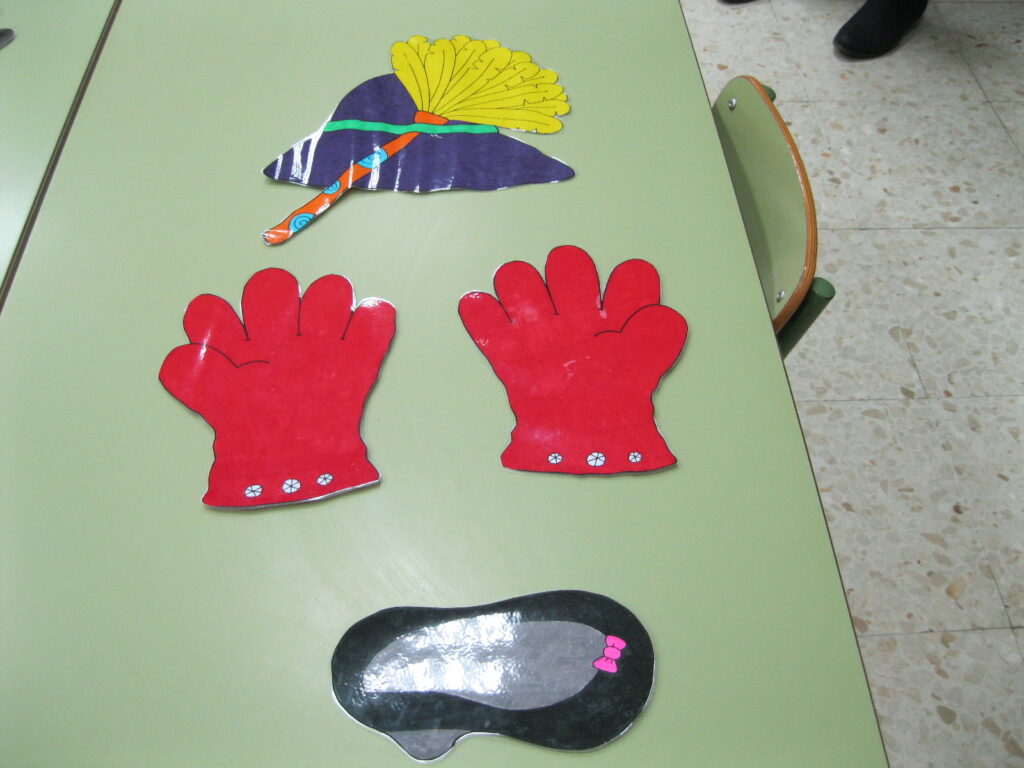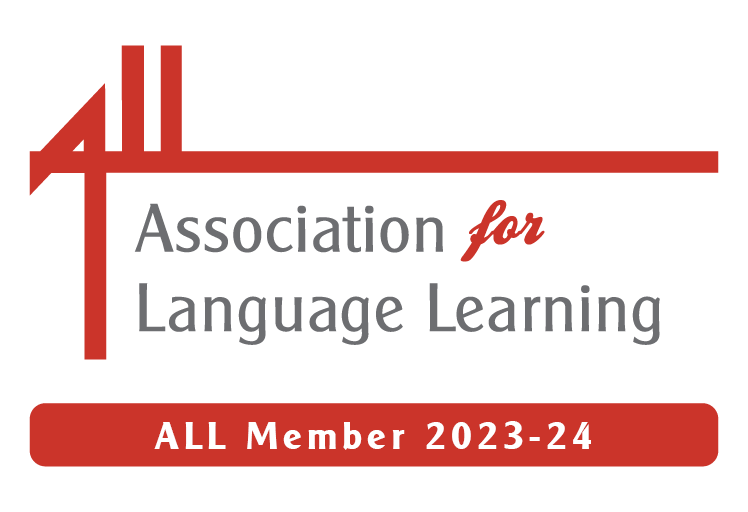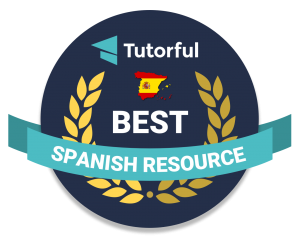Really interesting infographic on developments in classroom technology.

Courtesy of: OnlineSchools.com
¡Vámonos!
 Another nod to Neil Jones today for introducing me to the lovely Pimpollos, Peru’s answer to the Hoobs. Cheery, friendly and with ‘karaoke subtitles’, I think a very useful series.
Another nod to Neil Jones today for introducing me to the lovely Pimpollos, Peru’s answer to the Hoobs. Cheery, friendly and with ‘karaoke subtitles’, I think a very useful series.
On his blog, Neil has posted materials for using their song Las verduras. Great stuff!
There are many more videos by Los Pimpollos and here are a couple of my favourites.
1. Arriba abajo.
This song is about things that are either up (arriba) or down (abajo) and I can see Nursery and Reception enjoying dancing along to this. The video supports the language with visual clues and actions can easily be added to show which way -arriba o abajo – each object is found.
httpv://youtu.be/_PVbDErQkGg
2. Cada día se un poquito más
I like this song for the words, meaning every day I know a little more; when I’m older I’ll know millions of things, just you wait and see! Well, I’m ‘older’ and I still want to sing this song as I’ve still got plenty to learn!
Cada día sé un poquito más
Yo voy a aprender tú ya lo verás
Cuando sea grande voy a saber
Un millón de cosas tú vas a ver
Que yo voy a aprender
para poder ser mejor.
Cada día sé un poco más que ayer
Todavía falta lo sé muy bien
Pero poco a poco lo aprenderé
Si tienes paciencia lo vas a ver
Que yo voy a aprender
Para poder ser mejor.
Cada día sé un poquito más
Yo voy a aprender tú ya lo verás
Cuando sea grande voy a saber
Un millón de cosas tú vas a ver
Que yo voy a aprender
para poder ser mejor.
httpv://youtu.be/7yGE_hGJOaI
I really enjoyed Neil Jones’ presentation at ALL NorthEast Spanish day.
You can find all sorts of ideas and resources on his blog – http://mfljones.wordpress.com – well worth a look whatever phase you teach.
I loved some of the advertisements he showed. Here are two of them. Torres has been forgiven and I love funny dogs.
Pesi – Fernando Torres
httpv://youtu.be/nd7fc5iFL4g
Pancho, el perro que ganó el Primitivo
httpv://youtu.be/vwpbAsAzLf4
Following on from Rachel’s Hawkes’ reminder to me of my plan to teach phonics using her grid, another reminder popped up today when i was on Slidecast and found this short presentation courtesy of Clare Seccombe aka @Valleseco aka MFL Sunderland webmistress extraordinaire.
Phonics are key to our ability to read and pronounce unfamiliar words in a language -must ask Rachel if she has a phonics grid for German!
Another of the poems suggested by Joaquín Moreno in his presentation about poetry in Spanish teaching and learning was Nanas de la cebolla by Miguel Hernández.
He played us the poem sung by Joan Manuel Serrat – here it is below, along with a perfomance of it in spoken form and also the words.
Spoken version
httpv://youtu.be/ktZEWJAoai0
Nanas de la cebolla
La cebolla es escarcha
cerrada y pobre:
escarcha de tus días
y de mis noches.
Hambre y cebolla:
hielo negro y escarcha
grande y redonda.
En la cuna del hambre
mi niño estaba.
Con sangre de cebolla
se amamantaba.
Pero tu sangre,
escarchada de azúcar,
cebolla y hambre.
Una mujer morena,
resuelta en luna,
se derrama hilo a hilo
sobre la cuna.
Ríete, niño,
que te tragas la luna
cuando es preciso.
Alondra de mi casa,
ríete mucho.
Es tu risa en los ojos
la luz del mundo.
Ríete tanto
que en el alma al oírte,
bata el espacio.
Tu risa me hace libre,
me pone alas.
Soledades me quita,
cárcel me arranca.
Boca que vuela,
corazón que en tus labios
relampaguea.
Es tu risa la espada
más victoriosa.
Vencedor de las flores
y las alondras.
Rival del sol.
Porvenir de mis huesos
y de mi amor.
La carne aleteante,
súbito el párpado,
el vivir como nunca
coloreado.
¡Cuánto jilguero
se remonta, aletea,
desde tu cuerpo!
Desperté de ser niño.
Nunca despiertes.
Triste llevo la boca.
Ríete siempre.
Siempre en la cuna,
defendiendo la risa
pluma por pluma.
Ser de vuelo tan alto,
tan extendido,
que tu carne parece
cielo cernido.
¡Si yo pudiera
remontarme al origen
de tu carrera!
Al octavo mes ríes
con cinco azahares.
Con cinco diminutas
ferocidades.
Con cinco dientes
como cinco jazmines
adolescentes.
Frontera de los besos
serán mañana,
cuando en la dentadura
sientas un arma.
Sientas un fuego
correr dientes abajo
buscando el centro.
Vuela niño en la doble
luna del pecho.
Él, triste de cebolla.
Tú, satisfecho.
No te derrumbes.
No sepas lo que pasa
ni lo que ocurre.
httpv://youtu.be/z5UcV3BvbHQ
With a nod to Mr Steven Fawkes, language genius and the man who got HSM in Italian stuck in my head for weeks :oS
Ages ago I bought a book of little plays and poems by Gloria Fuertes, and have to admit that I haven’t looked at it much since I bought it. However, I was reminded of it on Thursday at the ALL NorthEast Spanish day in Gosforth when Joaquín Moreno was talking about using poetry in teaching Spanish.
He mentioned using a particular poem by Gloria Fuertes to read aloud and act out in order to practice getting English mouths around Spanish sounds – in this case, ‘rr’ is particularly practiced.
The suggestion was to chorally repeat the odd numbered, repeated line “Doña Pito Piturra” and for volunteers to read the even, varied line, with feeling and an action to accompany it.
A very simple idea that I shall be using in my classroom soon!
Below is the poem, and also a video of the poem being recited plus two versions, as a song!
DOÑA PITO PITURRA
Doña Pito Piturra
Tiene unos guantes,
Doña Pito Piturra
Muy elegantes.
Doña Pito Piturra
Tiene un sombrero,
Doña Pito Piturra
Con un plumero.
Doña Pito Piturra
Tiene un zapato,
Doña Pito Piturra
Le viene ancho.
Doña Pito Piturra
Tiene toquillas,
Doña Pito Piturra
Con tres polillas.
Doña Pito Piturra
Tiene unos guantes,
Doña Pito Piturra
Le están muy grandes.
Doña Pito Piturra
Tiene unos guantes,
Doña Pito Piturra
¡lo he dicho antes!
 Another little gem I found on the Consejería site last night was a resource aimed at language awareness.
Another little gem I found on the Consejería site last night was a resource aimed at language awareness.
Entitled Languages all around you, it was developed by
- Consejería de Educación
- Consolato Generale d’Italia Edinburgo, Ufficio Scolastico
- Goethe-Institut Glasgow
- Institut Français d’Écosse
This is a collection of activities showing how modern languages are part of everyday life. The idea is to make pupils more aware of the importance of languages, the role they play in many aspects of young people’s experience and how languages can be learned while having fun and playing.
This booklet is aimed at children of Primary six and seven (that’s our Year 5 and 6 I think) although I reckon it would be good as a transition project between Primary and Secondary to get know pupils and find out about their experiences.
In the six units pupils explore the following topics:
1. Family & Home
2. Friends & School
3. Languages in Public Places
4. Languages & Travel
5. Languages & Food
6. Languages & Sports
And the best bit? It’s freely downloadable from the publications tab under material didáctica.
I particularly like section 2 where it asks pupils to talk about languages spoken by their family as well as their peers. And I discovered something about Haribo too!
I recommend you explore the site if you haven’t already – there are other resources (some paid) that are well worth considering including PDFs of resources that are now out of print.
 Thanks to Liz Fotheringham last week for telling me about this wonderful site!
Thanks to Liz Fotheringham last week for telling me about this wonderful site!
As it explains here,
Newsmap is an application that visually reflects the constantly changing landscape of the Google News news aggregator.
Google News automatically groups news tories with similar content and places them based on algorithmic results into clusters. In Newsmap, the size of each cell is determined by the amount of related articles that exist inside each news cluster that the Google News Aggregator presents. In that way users can quickly identify which news stories have been given the most coverage, viewing the map by region, topic or time. Through that process it still accentuates the importance of a given article.
What’s really great is that you can choose the country from which you’d like the headlines – the list includes Spain and Mexico as well as Germany and Austria which allow a comparison of headlines in the smae language. Canada is included as well as France but the headlines are in English!
And there’s a tool bar at the bottom as well where you can choose the type of news that you’d like included.
Here I’ve just selected Sport in this screen shot :-
Another thing I like about this site is that if you hover on a headline, you get the beginning of the article plus a photograph. Just enough to give you more information about the headline, and just enough to be a ‘short text’. The ‘hover’ also tells you how many articles have been written on the same topic, and from which paper that headline came.
Liz mentioned it in the context of KS3 and 4 and using authentic materials for reading. I wholeheartedly agree – and would venture that it might be good to use with KS2 for
- gist
- looking for cognates
- ICU about what’s in the news in other countries
- comparing languages by using an unknown language eg by choosing Brasil or Netherlands
- match the headlines
Having posted my presentation on the QCA unit El Carnaval de los animales earlier today, it seemed rather appropriate that I should find a free resource that goes with the unit this evening!
 I knew that the Consejería de Educacción had a wonderful poster to illustrate this unit, but until now didn’t know that they had a downloadable animation that features the same wonderful illustrations. With files that are compatible with Mac or PC, the animation presents the vocabulary if you press the musical notes, then asks you to drag the correct word to the correct picture. If you make a mistake, there’s a lovely chorus of children saying ‘no’. Only does one thing but fun nonetheless.
I knew that the Consejería de Educacción had a wonderful poster to illustrate this unit, but until now didn’t know that they had a downloadable animation that features the same wonderful illustrations. With files that are compatible with Mac or PC, the animation presents the vocabulary if you press the musical notes, then asks you to drag the correct word to the correct picture. If you make a mistake, there’s a lovely chorus of children saying ‘no’. Only does one thing but fun nonetheless.
There’s also an animation for Christmas featuring a Christmas decorated with baubles from the Spanish speaking world and the villancico Campana sobre Campana which is lovely, and an animated alphabet which is only downloadable on a PC :O(
Lots of other great stuff on the site for the primary classroom too. More at a future date!
¡Vámonos! ©2025. All Rights Reserved.
Powered by WordPress.
Theme by Phoenix Web Solutions





